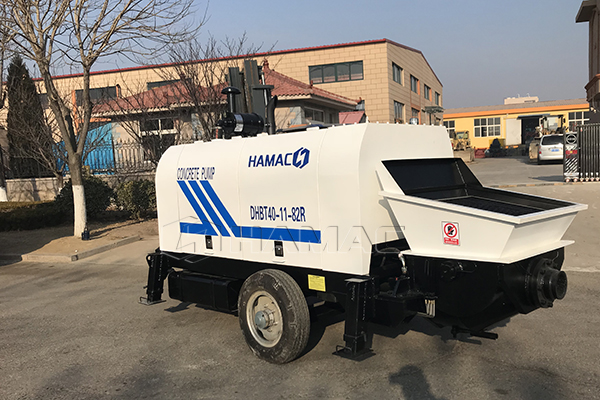Theoretically, the blockage is most likely to occur when three large stones meet in the same section, and the section is mostly occupied by stones, and the flowable area is small. Generally, the maximum particle size of the stone and the inner diameter of the pipe d: D<1:3 (Note: This item is specified in the Regulations, according to the conveying height and the type of stone, 1:2.5 to 1:5), and is in the pump A square grid is arranged on the machine hopper to prevent the super-path stone from being mixed in. In the concrete mixture with poor ratio of concrete and poor concrete, the water will penetrate through the aggregate gap, causing the aggregate to coalesce and cause the pipe to block. It often occurs in the pipeline bending, reducing diameter and the middle of the pipeline. In addition, when the concrete water-cement ratio is too large, it is easy to isolate, causing the mortar to separate from the aggregate and blocking the pipe. It is more common in the "segregation" blockage of the long-distance horizontal pumping and the lower end of the vertical downward pipe.

When the amount of cement used is too small and the sand ratio is too low, the workability of concrete is poor, the deformation is difficult, the frictional resistance in the pipeline is increased, and the pipe is easily blocked. When the concrete slump is too low (below 80 mm), the pumping resistance is significantly increased, making pumping impossible. The particle size of the sand is unreasonable. When the content of fine sand passing through the 0.315mm mesh hole is small, even if other technical specifications of the concrete meet the requirements, the pipe will be blocked. Because these fine sands play a ball-like role in concrete, it can reduce the friction between the pipe wall and the concrete, improve the flow ability of the concrete, increase the cohesive force and water retention, and have a great influence on the pump ability of the concrete. Therefore, Therefore, in JGJ/T10-95 "Technical Regulations for Concrete Pumping Construction", the sand passing through the 0.315mm sieve hole should not be less than 15%.
